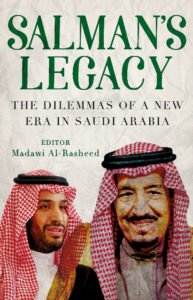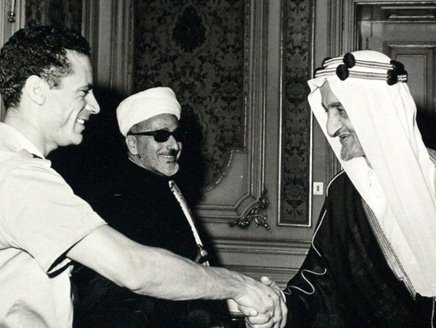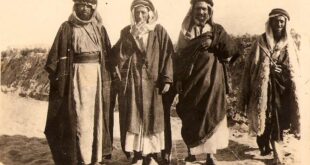
Saudi foreign policy did not begin to play with Islamic themes until the 1960s. Wary of any scheme of meaningful integration, ‘Abd al-‘Aziz[1] saw the projection of Islamic power as merely a means to impress foreigners, ‘by invoking his status, however self-proclaimed, as guardian of the holy places, to make it seem that his influence reached beyond his own frontiers’.[2] But as Faysal[3] asserted himself, formally seizing power in 1964, and with Nasserist Egypt weakened, the regime came to see possibilities in a limited deployment of Islam as a tool of foreign policy. To that end the Muslim World League was established in 1962, and, following a 1969 summit in Rabat, the Organization of the Islamic Conference (OIC) was established in 1972 as ‘a permanent institution through which the Saudis could express their views and emphasize their special role in the Islamic world’.[4] Since only indirect benefit accrued to the Saudi regime through the largesse bestowed upon these institutions, as well as governments and organizations within countries,[5] Piscatori, writing in 1983, was able to wonder ‘whether Islam plays as much of a role in Saudi foreign policy as is customarily thought’, indeed if there was such a thing as an Islamic foreign policy at all.[6]
Islamization of foreign policy responded not only to the challenge of external ideologies but to problematic sectors at home as well. Al-Yassini argues that as the state expanded, one of the underlying policies of the ruling clique was to keep the ‘ulama’ outside the political realm of decision making; alongside the bureaucratization of the priestly class seen in the 1960s and 1970s, Islam in foreign policy fitted that purpose. The World Assembly of Muslim Youth (WAMY) was established in 1972 with internationalist aims of supporting Muslim youth and student organizations around the world, ‘spreading tawhid’ (unicity), building mosques and schools, sending preachers to Muslim communities, and distributing religious material. In 1979, shortly before Juhayman’s revolt in Mecca, a new drive towards ‘Islamic cohesion’ (al-tamasuk al-islami) was launched on the occasion of the fourteenth Islamic century; administrative material laid out plans for new institutions serving ‘the whole Islamic nation, across national, racial, linguistic and other borders that now divide the Islamic community’.[7]
This impulse to view the Muslim exterior as an arena for managing both domestic and foreign antagonists was renewed in light of the Mecca insurrection, the Soviet bolstering of its leftist allies in Afghanistan and elsewhere, and Iranian revolutionary ideology. In its first response the government used the Muslim World League, the Muslim Brotherhood, and Pakistani Jamaat-i Islami and Ahl-i Hadith networks (which had intermingled through the Islamic University of Medina) to funnel people and cash to the Mujahidin fighting the Soviet-backed Afghan regime.[8] Olivier Roy makes the point that this disparate alliance was broken by the 1990–1 Gulf crisis, when most Islamic groups condemned the US troop presence in Saudi Arabia as Western imperial aggression.[9] The second major response the Saudi regime adopted was the expansion of its global proselytization effort. After taking power in 1982 King Fahd sponsored a new edition of the Qur’an for mass distribution through the King Fahd Complex for Printing the Holy Qur’an, the first such undertaking since al-Azhar published its version in 1926 following the dissolution of the Ottoman caliphate. Power was shifting from the old centres of Islamic learning to Saudi Arabia; interpretation of the text was passing to ‘Salafi’ Wahhabiyya.[10]
The expansion project of Fahd marks the beginning of a new phase in which the domestic and the foreign are fused in pressing Saudi claims to represent normative Sunni Islam. Funding for the coercive morality apparatus (Hay’at al-Amr bi-l-Ma‘ruf wa Nahy ‘an al-Munkar) rises from SR85.7 million in 1979 to more than SR203 million in 1985, and in 1994, after domestic legitimacy was rendered vulnerable through the political demands of the Sahwa ‘ulama’, the organization launched a journal, Majallat al-Hisba.[11] It is from this time that political science scholars began to rethink Islamic themes in Saudi foreign policy. In his 1992 study The Failure of Political Islam Olivier Roy discusses Salafiyya solely in the context of the early twentieth-century reform movement.[12] In examining what he calls the ‘re-Islamization’ of the 1980s and 1990s he avoids the term ‘Salafi’, preferring ‘neo-fundamentalism’, by which he intends the tradition of disengagement from political processes which was fostered by ‘ulama’ in the Saudi orbit. However, in Globalized Islam: The Search for a New Ummah, published a decade later, Roy embraces Salafiyya to describe this movement, acknowledging the semantic shift that has taken place. Similarly, the original 2003 edition of Raymond Hinnebusch’s study The International Politics of the Middle East, a standard work in the field, contains almost no discussion of Saudi deployment of Islam internationally,[13] while the 2015 imprint notes the Islamization of foreign policy, citing support for Salafi networks in Egypt and Syria in the context of geopolitical conflict with Iran.[14]
From a theoretical perspective, Saudi Arabia embraced ‘Salafism’ in its regional conflicts with Iran and Sunni political Islam. The constructivist model in international relations theory argues that discourses of culture and identity can delineate, direct, and restrain the political choices of regimes. This helped produce the notion of an Arab public sphere that is created through satellite television, the internet, and, latterly, social media.[15] It could be argued that despite the limits on the use of Salafi nomenclature in the domestic sphere, Salafism offers a means to balance against some of the challenges to regime interests; in other words, it is effective against what Lawrence Rubin calls the ‘ideational security dilemma’ presented by Iran since 1979 and political Islam since 2011.
 Arab Media & Society The Arab Media Hub
Arab Media & Society The Arab Media Hub





